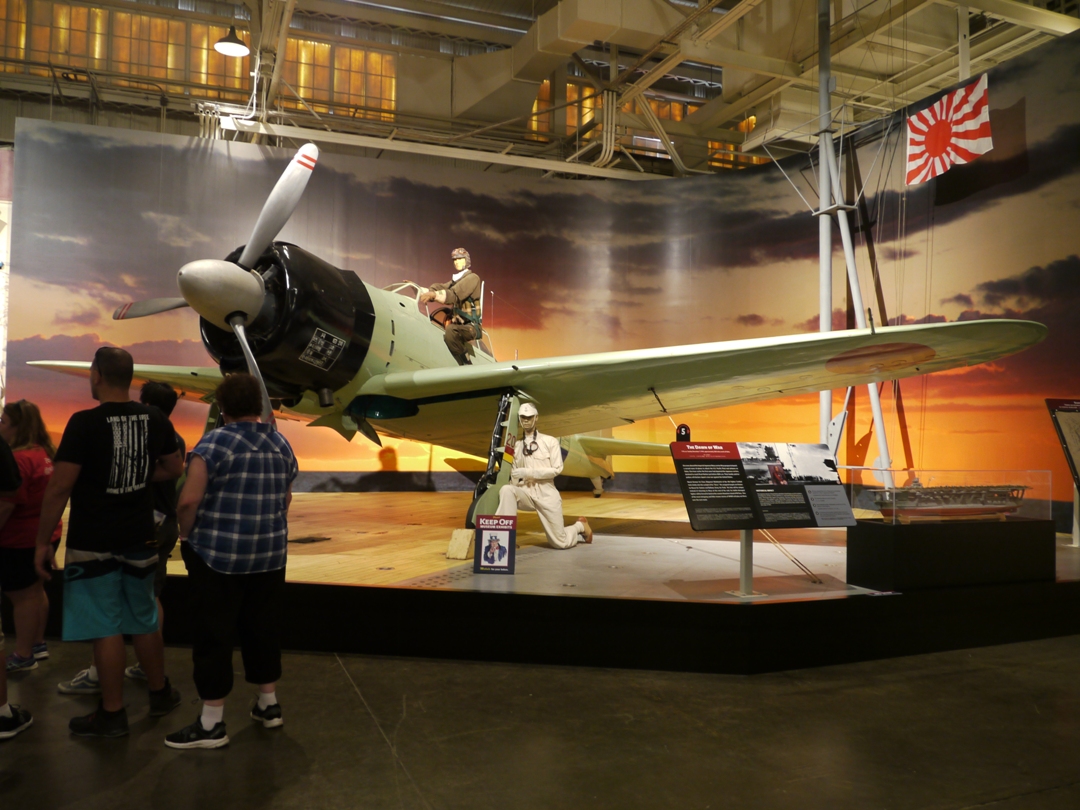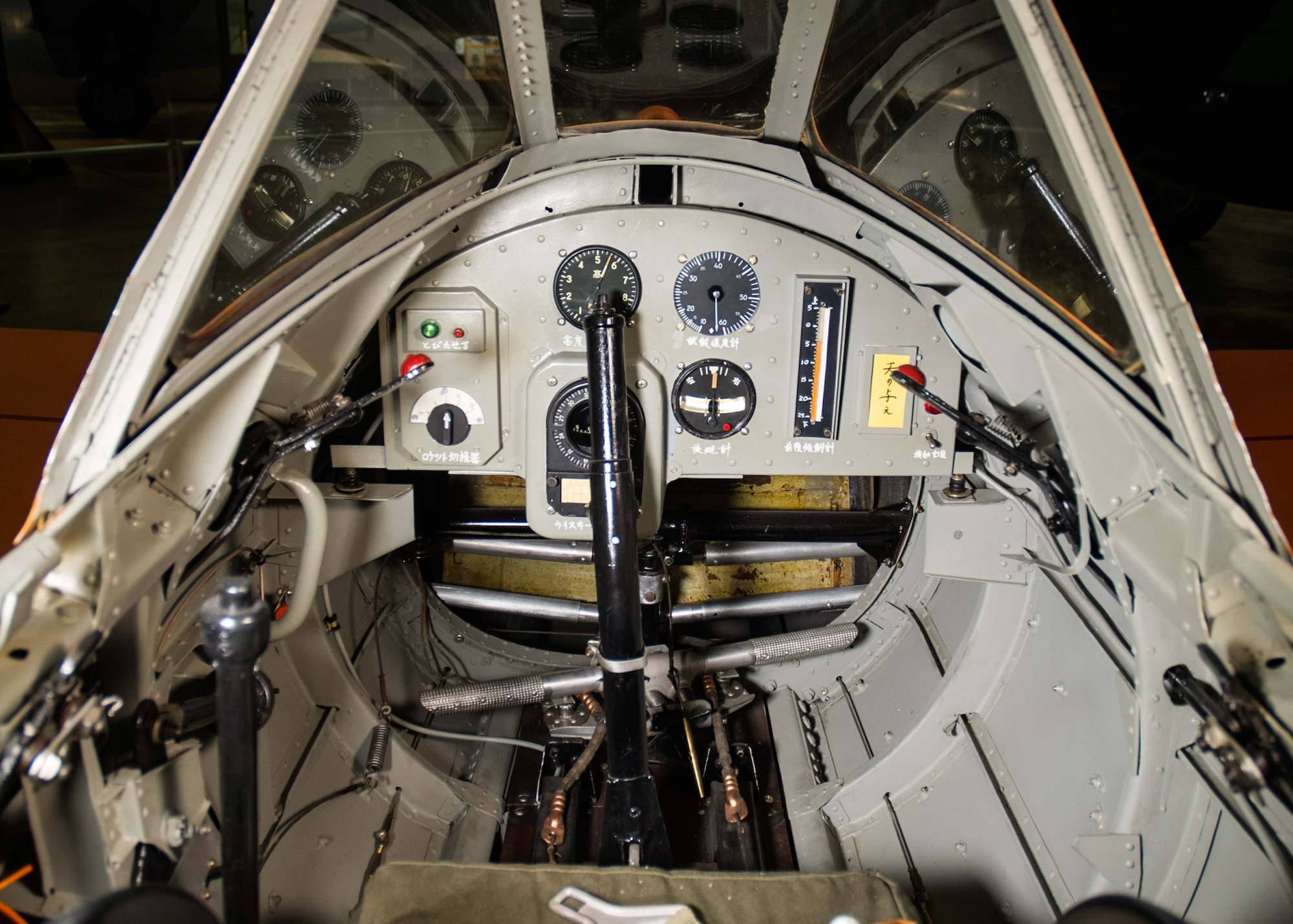Japanese Piloted Bomb - One of the most iconic images of the war in the Pacific during WWII is the strategy used by the Empire of Japan, which involved sacrificing some of its young pilots on suicidal missions of 'ramming the Allied surface fleets. Over 3,000 kamikaze pilots are believed to have been specially trained and prepared for this daring task, and Kamikaze attacks sank 34 ships and damaged hundreds more during the war. However, many missed their targets, aborted their engagement, or were intercepted and destroyed by Allied fighters and anti-aircraft defenses.
However, too many broke through, resulting in the Allies losing around 7,000 naval personnel. Most of you may be familiar with the use of the iconic Mitsubishi A6M "Zero" as the aircraft of choice, but, towards the end of the war, the pilots began to use a new type of rocket-powered aircraft that was special which was built for suicide attacks and launched. by pumps - the Yukosuka MXY-7Ohka.
Japanese Piloted Bomb
An idea that seems crazy on the surface, these planes were actually developed, built, and launched against the defenses of the powerful Allied fleets in the Pacific theater.
Deadly Japanese Suicide Rocket Unleashed
(meaning "cherry blossom"). The plane was also called "Bombi Baka" by the Allied troops. "Baka" comes from the Japanese for "stupid" or "idiotic", because the strategy of their use, in the view of the Allies, was stupid.
It was a purpose-built, rocket-propelled, man-guided kamikaze attack aircraft developed and used by Japan against Allied ships during the Pacific War of World War II. Despite its high speed, the
Relatively low range required it to be carried into battle as a "parasite plane" of a larger aircraft, such as the Mitsubishi G4M2e Model 24 "Betty" bomber.
It was the first flow towards its target, and when they were close, the pilot would fire the craft's three solid fuel rockets. It can be one at a time or all at once.
Japan's First Jet Aircraft Was Designed For Suicide Bombing Runs
Igniting the rocket, the pilot then flies the missile towards the ship he wants to destroy and does everything he can to hit it. This, needless to say, is more difficult than it seems.
However, for the target, the high speed provided by the rockets makes it very difficult to counter the threat. Since the aircraft can reach speeds of more than 400 mph (650 kph) in level flight and 580 mph (930 kph) or greater in a dive, it is a challenge for defenders to rise above zero and let the future guided missiles.
It managed to sink or damage several escort ships and transport ships during the Battle of Okinawa in 1945, but never sank any major battleships. Improved versions that attempted to address the aircraft's defects turned out to be too late to be deployed.

They succeeded in sinking or damaging three ships worthless and severely damaging three others, making a total of seven US ships damaged or sunk in
A Japanese Piloted Missile For Kamikaze Attacks In The New Delhi Airforce Museum, India[album][4160x3120]
During the war, somewhere in the region, 34 Allied ships (a mix of destroyers, minesweepers, and several large capital ships and support ships) were sunk. thousands of young lives were spent.
It was, in essence, a 2,600-pound (1,200-kilogram) bomb with wooden wings, powered by three Type 4 Model 1 Mark 20 solid-fuel rocket engines. -11.
Other variants were developed with mixed success, but only the Ohka-11 actually saw active service.
It was intended to be launched from coastal air bases and caves and submarines with aircraft catapults, although none were used in this way.
Could This Japanese Kamikaze Jet Fighter Have Won World War Ii?
Armament: A 2,600 pound (1,200kg) Ammonalwarhead in the nose. Ammonal is an explosive made from ammonium nitrate and aluminum powder.
During World War II, kamikaze ("divine wind")-style attacks were a Japanese suicide bombing strategy used to destroy enemy surface ships (the attacks were also used against the B-29 Superfortress, but with little success).
Suicide attacks by Japanese pilots were also observed in the early stages of the Pacific War, but more as a kind of last desperate sacrifice when their plane was mortally wounded. For example. During the Attack on Pearl Harbor in 1941, many pilots used their damaged planes as ad hoc flying explosives.

But these were not kamikaze attacks. In fact, Allied and Luftwaffe pilots have also been known to do similar things to their crashed planes. It's rare, but it does happen.
Pilot Of Plane That Bombed Hiroshima Dies
"Real" kamikaze attacks, that is, attacks using specifically trained pilots in specially adapted aircraft, did not actually begin until the fall of 1944.
At this point in the war, the tides of war turned against Imperial Japan. The Japanese forces experimented with many tactics in an attempt to inflict as much damage as possible on the advancing Allied forces with the dwindling resources they had.
, ultimately had little effect on the outcome of the war. While a formidable attack to face as a defender, tactics were quickly developed to overcome them, making the whole effort completely reckless, or "Cattle", as the allies came to sneer at. call it. Housed in museums around the world, the living examples of World War II bomber pilot Yokosuka Ohka tell a story of despair and resolution as Japan faces greater horror. predictions for the outcome of the war during 1944.
With large naval fleets curbing Japan's once-far-reaching influence, some Japanese planners sought new ways to combat invasions by sea.
Photo] Bomb Dropped By Japanese Pilot Kazumi Horie Exploding On The Flight Deck Of Uss Enterprise During Battle Of The Eastern Solomons, 24 Aug 1942
Ensign Mitsuo Ohta, a transport pilot, designed a rocket-powered airframe with a large explosive payload and a pilot to guide it to an Allied warship. The piloted bomb will be launched from a mother ship aircraft.
Assisted by the Aeronautical Research Institute of the University of Tokyo, Ohta had drawings of the suicide bomb to be shown in August 1944.
Called the MXY7 and given the name Ohka, or Cherry Blossom, the craft used three solid propellant rocket motors in the rear fuselage that could be fired simultaneously or one at a time to provide acceleration to the target.

A creased and split photo shows two Americans inspecting a newly acquired Ohka flying bomb. (Collection of Gerald Balzer)
Atomic Bombings Of Hiroshima And Nagasaki
The Ohka Model 11 has a top speed of 403 mph with rocket power at an altitude of over 11,000 feet. Its terminal dive speed is said to be 576 mph. Its distance is about 23 miles. The explosive charge in the nose was 1,200 kilograms, or 2,646 pounds — more than a ton of destruction.
When launched at the range of a ship, such performance in such a small package is a concern for the Allies.
But the weak link in the Ohka project was its reliance on relatively slow and easy-to-intercept bombers as mother ships, as both friend and foe would learn during the battle for Okinawa in 1945.
Rapid development led to the production of prototypes in September 1944, with no power flights the following month. Some development flights were not piloted.
Vintage [1958] Hawk Japanese Kamikaze Piloted Baka Bomb=okha 1/48 + Repro Decals
In addition, variants of glider trainers called K-1 were built with skids for landing, a feature not needed for the intended one-way flight of the fighter versions.
The K-1s carry water ballast instead of a warhead and powerplant, and some ballast can be released to make landing speeds more manageable for trainers.
The unpowered K-1 trainer version of the Ohka piloted bomb landed on a centerline skid, visible below the plane. This restored example is located at the National Museum of the United States Air Force in Dayton, Ohio. (Photo by Ken LaRock)

Since all nations at war faced a strategic shortage of materials, the Ohka was designed to be built mostly from readily available wood and metal alloys. Simplicity of construction was considered in the design to allow its mass production by semi-skilled workers.
This Japanese Rocket Powered Manned Missile Struck Horror Into Allied Sailors In Wwii
On March 21, 1945, a force of 16 Mitsubishi G4M twin-engine bombers escorted Ohkas to the US fleet near Okinawa. Their mission was derailed when American fighters intercepted the bombers too far to launch their flying bombs. The bomber crew ejected the Ohkas in an effort to save the bombers for future sorties.
Japanese pilots gather near a Mitsubishi J4M bomber carrying a bomb piloted by Ohka in 1945. (Naval History and Heritage Command photo)
The Ohka attacks in April had some success, with a near miss on the battleship USS West Virginia on 1 April and the loss of the destroyer USS Mannert L. Abele on Okinawa on 12 ' April.
Navy gunners opened fire on the fast-approaching Ohka, but its pilot managed to hit the destroyer near its waterline. The ensuing explosion split the destroyer in two. Two more American destroyer picket ships hit Ohkas that day.
Aviation Of Japan 日本の航空史: Donryu Decals From Rising In 1/72
The US Navy was concerned about the Ohkas in the battle for Okinawa and what they could do for the expected invasion of the Japanese islands.
A 1945 Navy report stated that the Ohka "presents the most difficult target our surface and aircraft forces have encountered in the war to date. It is also probably the most dangerous anti-shipping weapon ever produced, a guided missile with the best possible control - one person.
The Navy says that the proximity fuzes - one of the best anti-aircraft weapons in the fleet - that Ohka will activate at about 30 to 45 feet close, but because of the high speed of the small that flying bomb, maybe four times as close.

Piloted bonding brush, piloted core drill, air piloted valves, remotely piloted aircraft, piloted drill bit, piloted reamers, remotely piloted aircraft system, piloted, hub piloted wheels, piloted counterbore, piloted countersink, piloted valve

0 Comments